David «Takashi» Favrod is a Swiss-Japanese photographer, living and working in Switzerland. He graduated from École cantonale d’art de Lausanne with a master’s degree in art direction and a bachelor’s degree in photography. He has won the Aperture Portfolio Prize and has been included in reGeneration 2, a book and touring exhibition showcasing emerging photographers. Recently he is selected as the Second Edition 2012 Hot Shots!

Raised up in a bi-cultural family with a Japanese mother and Swiss father, Favrod constantly searches for his identity in his works. His project Caijin – meaning “the foreigner” in Japanese – is intrigued by his experience of being rejected to obtain double nationality by the Japanese Embassy when he was 18. Caijin is a fictional narrative, a tool for his quest for identity, where self-portraits imply an intimate and solitary relationship that he has with himself. The mirror image is frozen in a figurative alter ego that serves as an anchor point. The aim of this project is to create “his own Japan” in Switzerland, from memories of his journeys when he was small, his mother’s stories, popular and traditional culture and his grandparents’ war narratives.
Tell us about yourself and how you become interested in photography.
My name is David Favrod. I was born on the 2nd of July 1982 in Kobe, Japan, of a Japanese mother and a Swiss father. After business school, I decided to change my path by attending an art school learning industrial design (Ecole cantonal d’art de Lausanne,ECAL)). This is where I discovered photography. We had one photography course every week. After the first half of the year, I decided to turn to photography. Now I’ve been taking pictures for 7 years.
How do you like living in Switzerland?
Switzerland is a really great place for an artist. Good artists, good schools, good museums and galleries.
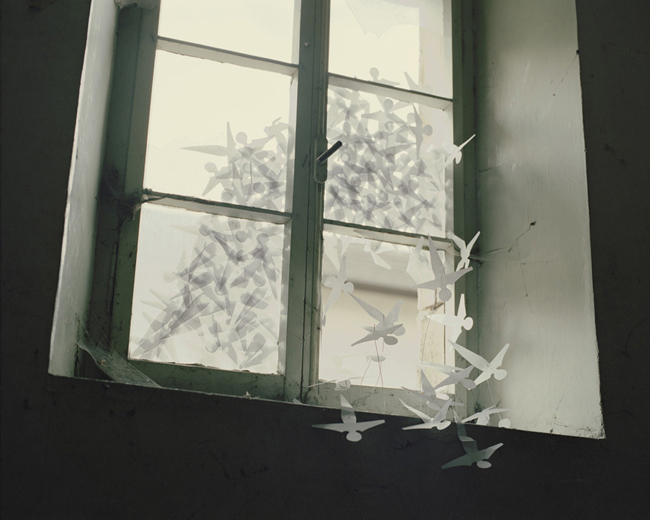
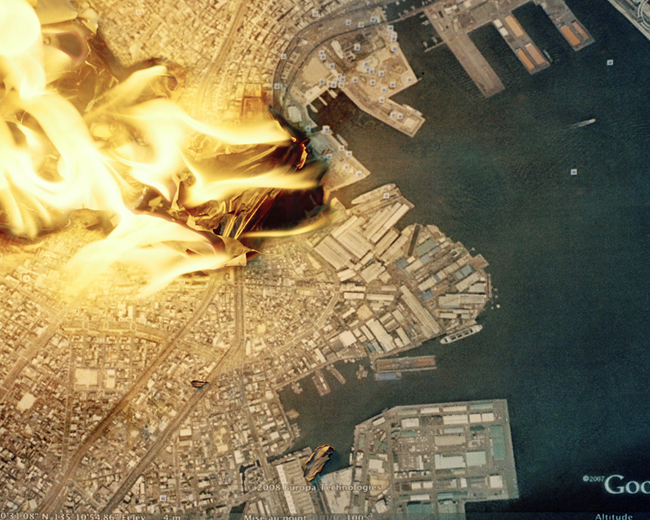
What interests and inspires your art?
Books, films, history, memories, fairy tales and my family.
You are raised in a very interesting family with a Swiss father and Japanese mother. How does Swiss and Japanese culture influence your works?
My bi-cultural education is the essence of my inspiration. The majority of my inspiration comes from things that are around and within me. I do not think I could tell you how each culture has influenced my work. Rather it’s the mix of these two cultures that influence it.
Gaijin creates your own Japan in Switzerland. Can you tell us more about your art making process?
Gaijin is a project that I began in 2009. I started it as my bachelor degree’s project at the Ecole Cantonale d’Art de Lausanne and afterward I extended the series. This first approach is to bring together various topics that are important to me, for example, the war stories of my grandparents, the correlation between Switzerland and Japan, the family archives, the stories that my mother told me when I was little, or the mountains. Gaijin is a fictional recital, a tool for my quest for identity, where auto-portraits imply an intimate and solitary relationship that I have with myself. The mirror image is frozen in a figurative alter ego that serves as an anchor point.
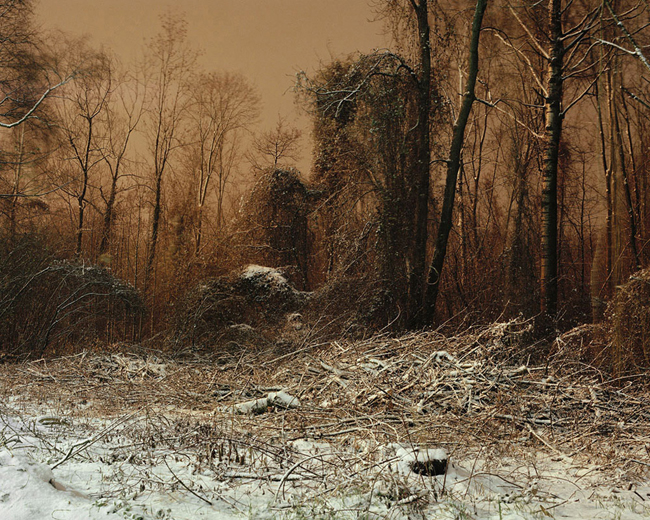
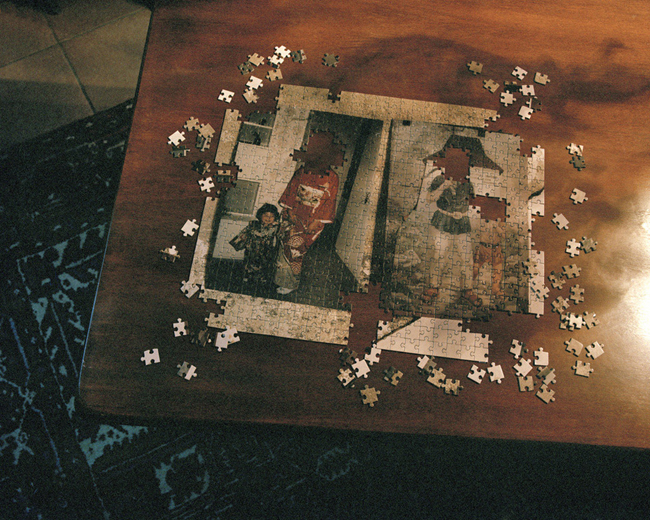
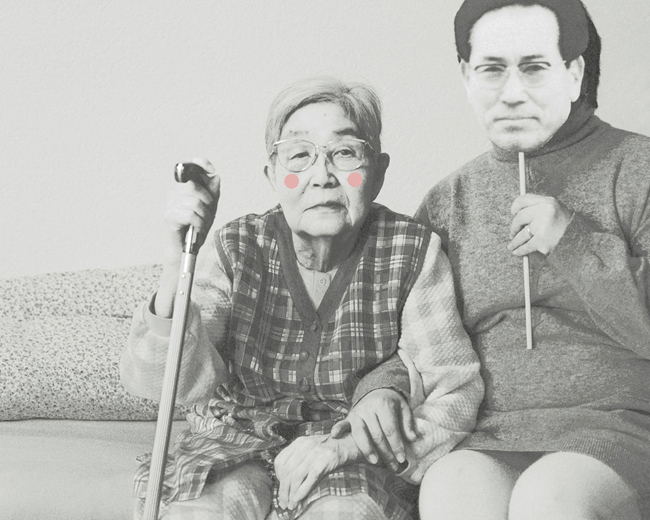
After Gaijin, in 2010, I produced the book Omoide Poroporo, which was published at Kodoji Press. It is a mix of my pictures and archives of and from my family, and now I am producing a series called HIKARI, a work about the memories of my grand parents during the war.
Each of your images seems to have a lot of stories behind it. Do you want to talk about some of them?
Sadako, the image of the window with the paper birds, is about the woman Sadako who at her home close to Ground Zero when the atom bomb was dropped in Hiroshima in 1945. Years later, she developed leukemia and was hospitalized in 1955 and given a year to live. She died in 1955 at the age of 12.
During a hospital visit, Sadako’s best friend folds an origami crane as an old Japanese story says that who folds 1,000 origami cranes will be granted a wish by a crane. As Sadako didn’t manage to fold all 1,000 cranes, her friends folded the remaining ones and buried them with her. With this image, I want to speak about the war, the memory and the atomic bomb.
Mishiko is about the sister of my grandfather. She fell ill during the Second World War, doctors diagnosed her a poor hydration. In Japan, watermelon is a very popular fruit that holds a lot of water. So his parents gave her watermelon regularly. But the diagnosis was wrong and it was a salt deficiency and she died shortly after.
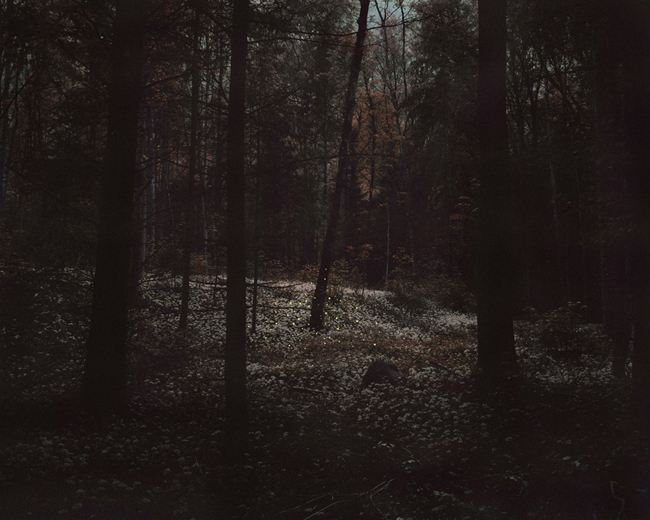
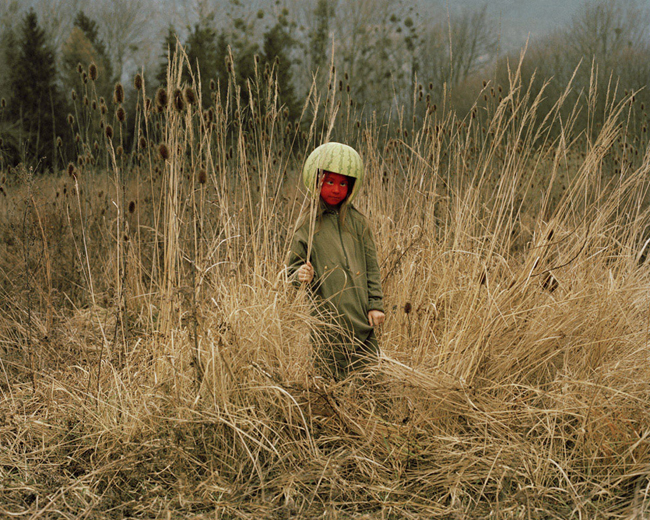
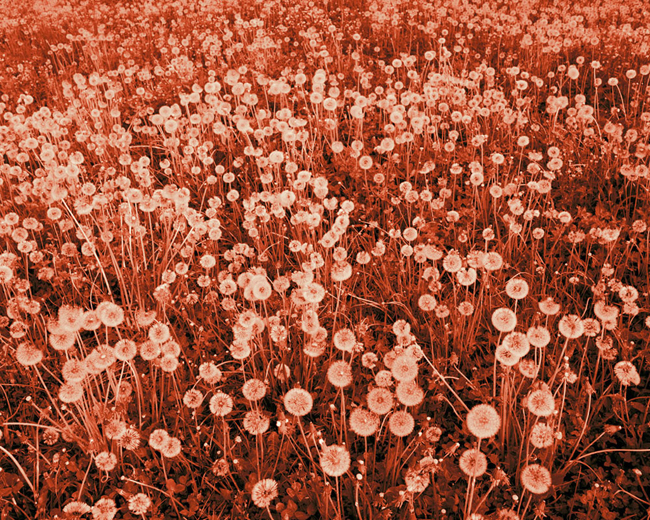
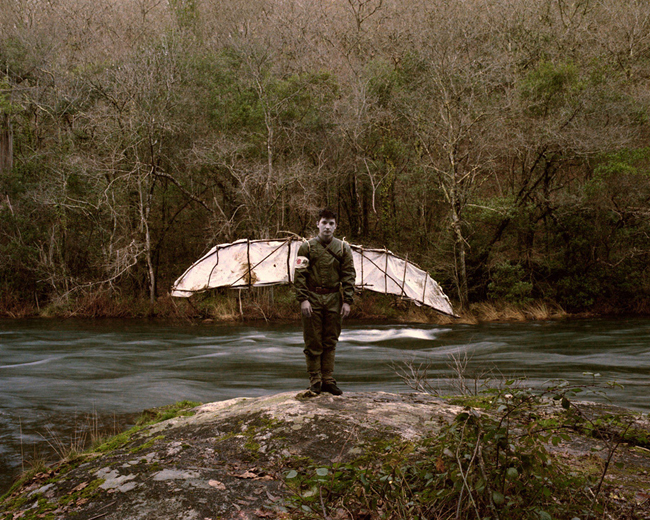


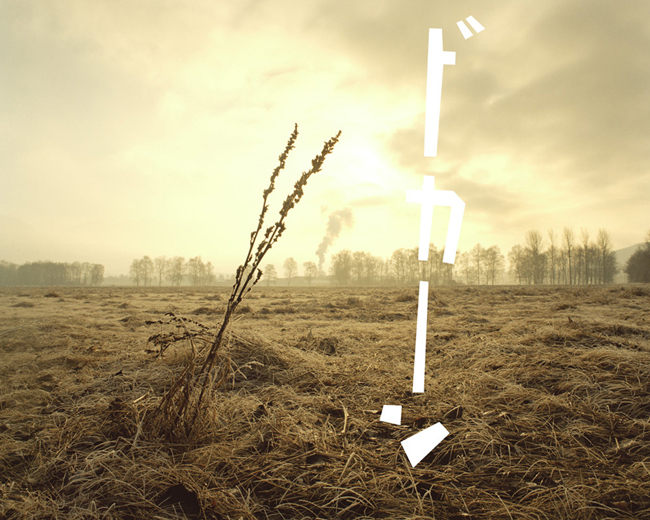 Your exhibition view is quite unique with your works printed in various sizes. What’s your thought behind that?
Your exhibition view is quite unique with your works printed in various sizes. What’s your thought behind that?
Each picture has its own size. Each series has its own presentation—framed or not, oak frames or black frames, difference papers to use…Then I deal with the different images that I want to show. I think about the rhythm, the sequence of images, and the relationship between them: in opposition or related by meanings.
You have an amazing exhibition list both in Europe and America. Could you give our readers some advise on how to get works out there?
Just be persevering, loving what you do and sharing your work.
David Favrod website
Interview by Zhenjie Dong. Zhenjie is a Chinese born and New York based artist and photographer exploring ways to express her social and political concerns through photography. She spoke at TEDxCreative Coast 2012 about her work Recreating Myth and the philosophy behind it. Her works have been exhibited in the Atlanta Photography Group Gallery, the North Carolina Museum of Art, and will join the global tour of the Lumen Prize Exhibition, traveling around the world in United Kingdom, Latvia, China and Wales.